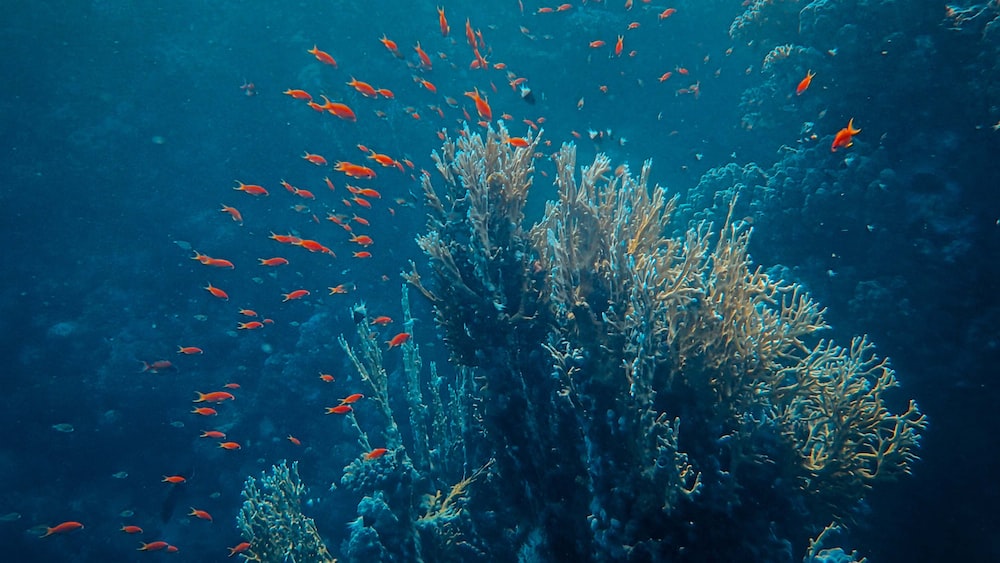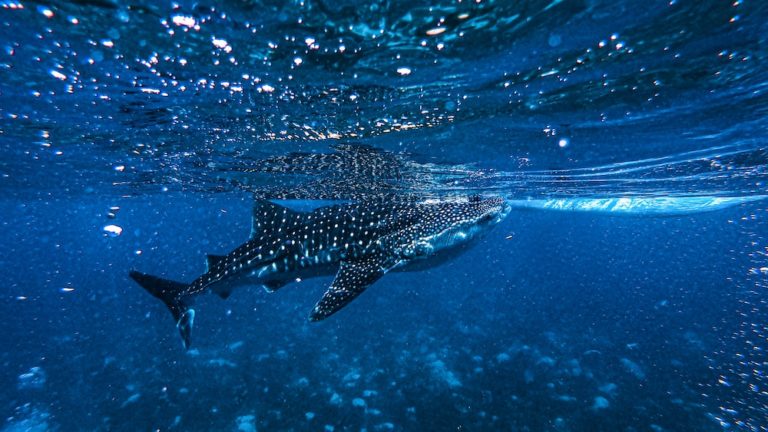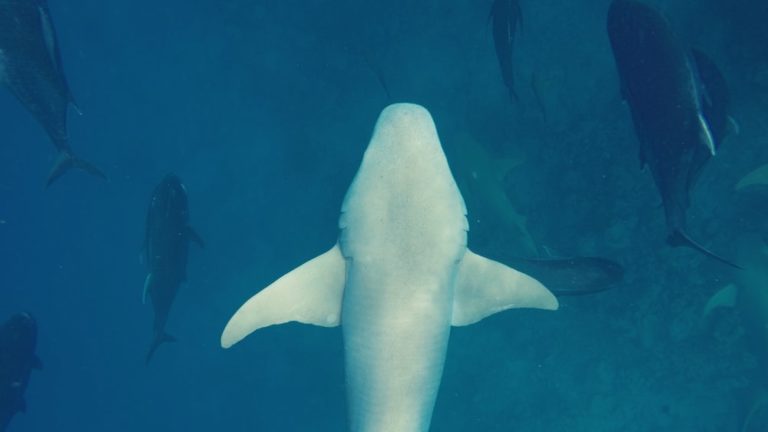Do Sharks Have Swim Bladders: Buoyancy And Adaptations
Do Sharks Have Swim Bladders: Buoyancy And Adaptations
Dive into the deep blue, and you’ll encounter a realm where creatures live by rules alien to our landlocked sensibilities. Among them, sharks, those formidable denizens of the deep, glide through their saline world with a grace that belies their power. But have you ever wondered – do sharks have swim bladders? This quintessential bit of biology trivia can be a buoyant topic for marine life enthusiasts.
Key Points:
- Sharks do not have swim bladders, but they have evolved unique adaptations for buoyancy.
- Sharks use their large, oil-filled livers and pectoral fins to maintain buoyancy and control their position in the water column.
- The absence of swim bladders in sharks is a result of evolutionary adaptations to their predatory lifestyle.
- Fishing operations and human interactions can affect shark buoyancy and pose conservation challenges.
- Conservation efforts for sharks focus on protecting their habitats and reducing human impact on their buoyancy and survival.
- Understanding shark buoyancy provides insights into their behavior and the delicate balance of marine ecosystems.
The quest to understand shark buoyancy is not just a curiosity; it unveils the evolutionary adaptations that have enabled these majestic creatures to become the rulers of their watery realm. While many fish float effortlessly through the brine, thanks in part to their swim bladders, sharks seem to defy the odds without this seemingly essential tool.
Exploring how sharks maintain their place in the oceanic order is not just a matter of academic intrigue, but it imparts important insights into the challenges these animals face and the conservation efforts required to ensure their survival. So let’s dive headfirst into this fascinating topic, balancing our thirst for knowledge with a wave of conservation consciousness.
Exploring Shark Buoyancy
The dance of the sharks through the ocean’s layers is a spectacle of fluid mechanics and biological ingenuity. The question of “do sharks have swim bladders” guides us to the heart of understanding how these seafaring predators manage to stay afloat. Unlike many marine creatures, sharks have evolved a unique set of adaptations that allow them to rise and sink without the gas-filled bladders used by their fishy counterparts.
The Role of the Liver in Shark Buoyancy
Sharks have turned to their large, oil-filled livers as substitutes for the swim bladders absent in their anatomy. Acting as natural buoys, these livers are rich in squalene, a lighter-than-water compound that allows sharks to maintain buoyancy with finesse. It’s a masterful adaptation that not only keeps them suspended but also supports their energy-efficient lifestyle amid the currents.
The size and oil content of a shark’s liver can be so grand that it accounts for up to 25% of its total body weight, a testament to the role it plays in maintaining buoyancy. In this oily organ lies the secret to a shark’s ability to hover in the ocean’s embrace, poised to explore or to strike.
Sharks use their large, oil-filled livers as natural buoys, rich in squalene, allowing them to maintain buoyancy with finesse and support their energy-efficient lifestyle.
The Function of Pectoral Fins in Maintaining Level
Pectoral fins might not seem like buoys at first glance, but in the world of sharks, they are pivotal in keeping these maritime creatures on an even keel. By adjusting the angle of their fins, sharks can pitch and roll through the ocean waves, a nautical aerodynamics that keeps them from sinking like stones.
These fins work similarly to airplane wings – as a shark moves forward, water flows over and under the fins, creating lift and preventing the shark from plunging to the seabed. It’s a humbling reminder of the raw and refined power contained in the shape and motion of a shark’s body.
The Absence of Swim Bladders in Sharks
One could argue that the ocean’s currents are like a watery highway, and sharks are the highway patrolmen without the need for u-turns. When pondering whether do sharks have swim bladders, the answer is a simple no. Yet, their absence is not a deficiency but rather a spotlight on the shark’s evolutionary journey – where form meets function with streamlined precision.
Evolutionary Reasons for Lacking Swim Bladders
The absence of swim bladders in sharks is a nod to their role as dynamic, voracious predators. Over millions of years, sharks have developed muscular, streamlined bodies that allow for robust and swift movement through the water column.
In this evolutionary arms race, swim bladders were left behind as sharks gained the ability to regulate their position in the water by other means. The advantage of sink-or-swim propelled these hunters to adapt, trading the buoyancy control organ for a more active lifestyle that often requires rapid and controlled descent to capture prey.
Embrace adaptation and trade old habits for a more active lifestyle to propel your personal growth.
How Sharks Compensate for the Absence of Swim Bladders
Without swim bladders, sharks have harnessed a series of adaptations to take the reins on their buoyancy. Besides the aforementioned liver and pectoral fins, they’ve got a few more tricks up their gills.
Dynamic lift complements the role of the liver and is generated by sharks’ constant forward motion, much like an airplane in flight. Another buoyancy buddy is cartilage – lighter than bone, it’s the perfect material for a lean, mean, swimming machine. Coupled with their extraordinary senses that guide them through the murky depths, sharks have shaped themselves into beings perfectly attuned to their watery world.
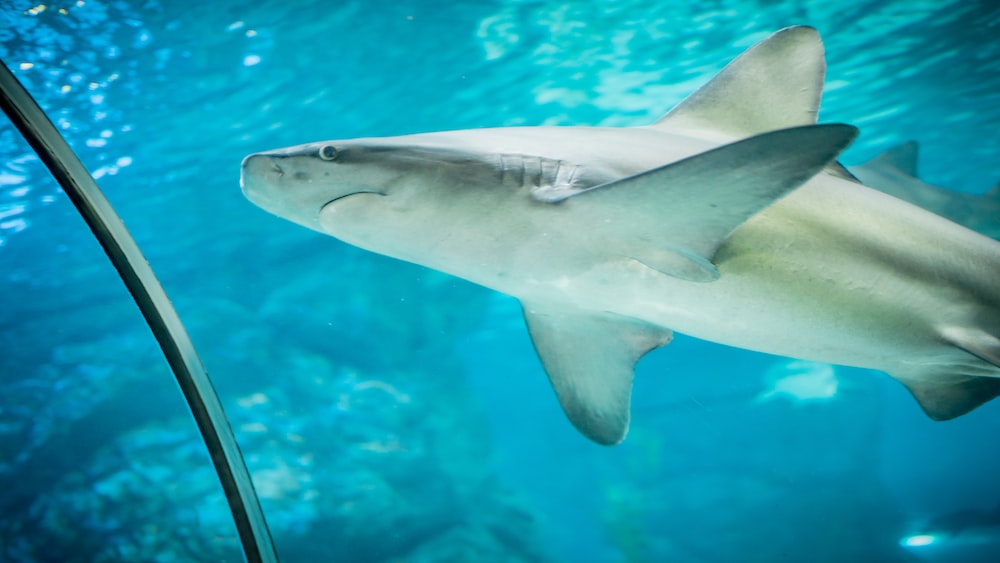
Comparing Shark Buoyancy to Other Marine Animals
Much like a puzzle, the ocean’s ecosystem fits together in a balance of form and function, buoyancy playing a key role for all its inhabitants. When we shift our gaze from sharks and their missing swim bladders, a whole new world of aquatic adaptations opens up, illustrating the vast and varied ways that marine creatures stay afloat and survive in a blue planet.
Swim Bladders in Fish: A Contrast
When we consider do sharks have swim bladders, it’s particularly illuminating to examine how other fish use them. Their swim bladders are akin to internal balloons that can be inflated or deflated to change buoyancy, a feature that allows them the leisure of floating without constant movement.
This characteristic is a sharp contrast to sharks, reflective of the diversity in evolutionary adaptations. While sharks rely on a combination of oil-filled livers and fin action to navigate the seas, other fish like bony fish boast these gas-filled sacs which grant them a more energy-efficient way to hang out in the water column.
Understanding the different adaptations of swim bladders in fish reveals the diversity and efficiency of evolutionary traits for buoyancy control.
Similar Structures in Other Organisms
Beyond sharks and bony fish, other marine creatures sport their own versions of buoyancy aids. Cephalopods, for example, have cuttlebones, gas-filled chambers that help them control their buoyancy. And let’s not forget the air bladders in seaweeds, simple yet effective floats that keep these photosynthetic sunbathers near the ocean’s surface.
These diverse mechanisms speak to the myriad paths life takes to carve out a watery existence. Each organism’s buoyancy adaptation is a perfect fit for its ecological niche, whether it’s the cuttlefish’s cuttlebone or the air bladder of a kelp frond, showcasing the innovation of nature in solving the universal challenge of staying afloat.
The Impact of Buoyancy on Shark Behavior
The buoyancy of sharks is an invisible force that shapes every aspect of their lives, from their hunting strategies to their migrations. Understanding how these sea hunters conquer the forces of gravity under the waves helps us to appreciate the balance of power and grace that they embody as they patrol the ocean’s highways.
Constant Swimming: Myth or Reality?
The belief that sharks must swim continuously to avoid sinking has swirled around in the minds of ocean aficionados like a relentless whirlpool. But is this a watery fable or a profound truth? The answer is more nuanced than a simple yes or no. Benthic sharks, such as nurse sharks, are known to rest motionless on the ocean floor, busting the myth that all sharks need perpetual motion. However, many pelagic sharks, like the great white or the hammerhead, do often swim constantly. This behavior maximizes water flow over their gills for oxygen and assists in maintaining buoyancy without a swim bladder.
For these perpetual swimmers, their ceaseless sojourn through the sea is not just about buoyancy; it’s a vital part of their survival strategy. When discussing whether sharks need to continually swim, it’s crucial to consider the species and their unique adaptations. Some sharks have developed the ability to gulp air and store it in their stomachs, allowing them a reprieve from the ceaseless ballet of swimming. While these sharks may not live out the ‘constantly swimming’ narrative, they still showcase a fascinating tapestry of survival strategies.
Buoyancy and Predatory Advantages
When exploring the ocean’s depths, certain adaptations are akin to the superpowers of the marine world. Sharks, sans swim bladders, have turned a supposed disadvantage into one of their sleekest hunting tools. The utilization of their oil-rich liver can’t be understated; it’s like a built-in life vest that offers a buoyancy assist without the need for a cumbersome air pocket like a swim bladder. This oily organ giveth sharks a certain grace, a finesse that allows them to ambush prey from below with stealth and precision that’d make any cloak-and-dagger aficionado proud.
Couple this with pectoral fins sculpted like nature’s own hydrofoils, and you’ve got a predator that can soar through the water with effortless poise. These sleek swimmers can make swift, vertical ascents to snatch unwary prey, using gravity and their dynamic body shape to glide back into the depths. This elegant functionality, born from the absence of a swim bladder, showcases how sharks have honed their bodies into weapons finely tuned for the hunt. It’s buoyancy turned offensive, an evolutionary twist that’s been millions of years in the making.
Human Interaction and Shark Buoyancy
The intricate balance of the ocean’s ecosystems is often thrown into disarray by the hand of humans, and many facets of shark life are affected – even their buoyancy. The invisible lines of interaction we cast out into the marine world snag and alter the lives of these majestic sea denizens in ways not immediately apparent. Focused conservation efforts scrutinize these interactions, aiming to curb the ripples we send through underwater realms.
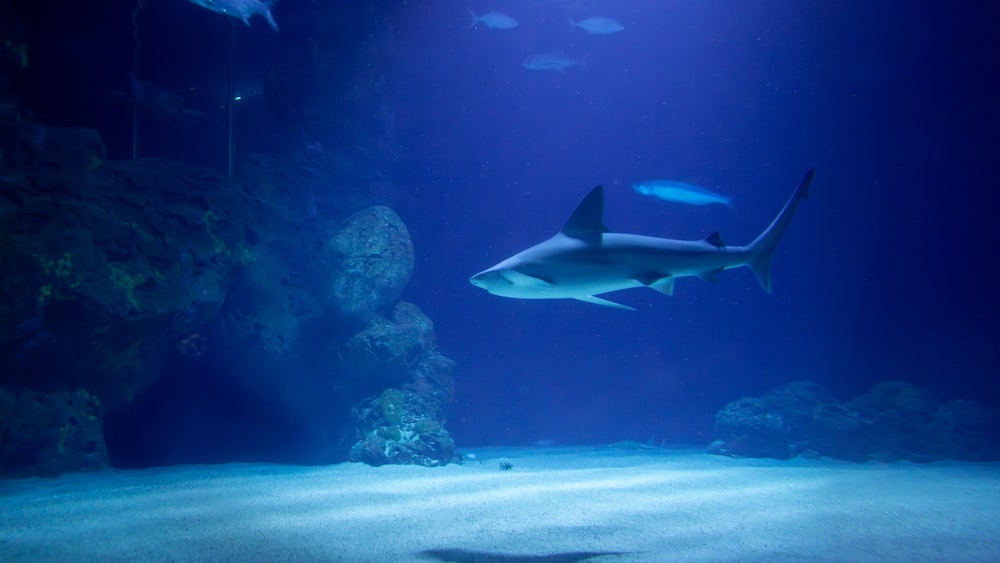
The Effects of Fishing on Shark Buoyancy
Imagine hauling a creature evolved for the ocean’s pressure and depths up into an alien environment, and you’ve grasped the essence of what fishing does to sharks. Sharks caught on lines and nets may struggle, causing internal injuries that can influence their innate buoyancy control mechanisms. When fishing operations mistakenly catch sharks (a scenario termed ‘bycatch’), these apex predators can suffer from decompression issues similar to the bends in humans. This isn’t just something that disappears once they’re released; it can haunt their movements and hunting tactics, sometimes leading to a slow and sorrowful descent to the ocean floor.
In the rare instances that sharks are targeted for their liver oil, rich in squalene, it’s not just a loss of a single shark – it’s a jab at the species’ buoyancy systems. Removing such sharks from our oceans depletes a critical player in the aquatic balancing act and highlights the need for firmer fishing regulations and monitoring. The conversation on how to mitigate these effects is ongoing, but the need for action is as clear and pressing as the waters these creatures call home.
Removing sharks from our oceans disrupts the aquatic balancing act and highlights the need for firmer fishing regulations and monitoring.
Conservation Efforts Related to Shark Buoyancy
The dance of marine conservation is a complex one – step forward, glance back, and plan the next move with care. Among the various threads of this conservation quilt, efforts to protect sharks often revolve around an understanding of their buoyancy and its role in their survival. Shark sanctuaries and marine protected areas (MPAs) wave the flag for conservation by offering a haven where sharks can glide without the specter of fishing nets threatening their delicate balance.
Organizations and researchers are deploying satellite tags on sharks, not merely as a scientific whim, but as a key that unlocks the patterns of their migration and habitat utilization. Understanding these movements further informs how we can protect species affected by changes in buoyancy due to human interaction. Moreover, education and awareness campaigns ripple through the human oceanscape, imparting knowledge on sustainable seafood options that can help reduce bycatch.
With collaborative international agreements, like the Convention on International Trade in Endangered Species (CITES), the chorus of nations lends its voice to the cause. These efforts, however labor-intensive, are the tide keeping our ocean giants afloat, ensuring that the absence of a swim bladder doesn’t become an Achilles’ heel for sharks in an ocean they’ve ruled for eons.
FAQs
1. Why do sharks not need swim bladders?
Sharks do not need swim bladders due to their unique adaptations, which include a buoyant liver filled with low-density oils and dynamic pectoral fins that act as hydroplanes. This innovative combination allows them to maintain buoyancy without the organ most fish rely on.
2. How do sharks maintain their position in the water column?
Sharks maintain their position in the water column by leveraging their large, oily liver for buoyancy and using their fin positioning and body movement to control their pitch and altitude in the water.
3. Can sharks control their buoyancy?
Sharks can control their buoyancy, though not via a swim bladder like some fish. They utilize their liver’s oils to gain lift and adjust their pectoral fins to change direction and depth.
4. What adaptations have sharks developed in place of a swim bladder?
In place of a swim bladder, sharks have developed a large, oil-filled liver for buoyancy, unique fin adaptations for maneuverability, and in some cases, the ability to gulp and release air for vertical positioning.
Conclusion
Our journey, like a curious dolphin’s playful leap across the ocean surface, comes to a graceful arc with a splash of realization: the answer to “do sharks have swim bladders” is a resounding no, peppered with a chorus of awe at their evolutionary ingenuity. The ocean’s ballet continues, with sharks as the principal dancers, moving with a fluidity that defies their swim bladder-less anatomy, a testament to the adaptability and resilience of marine life.
As aficionados of the briny deep and its inhabitants, it becomes our silent pledge to tread lightly around these creatures. The decisions we make and the actions we take can ripple across the marine tapestry, affecting not only buoyancy but the very essence of life in the ocean. It’s more than just about swim bladders; it’s about the symphony of adaptations that enable survival beneath the waves.
Embarking on this deep dive into the world of sharks has hopefully provided not just answers, but an awakened marvel for these mysterious creatures. May this knowledge ripple outwards, inspiring a wave of conservation efforts for our finned friends. And so, until we meet again to share another tale from the blue abyss, let’s continue to float the idea of a world where the ocean’s pulse beats strong and unfettered. Farewell, fellow sea sprites and guardians of the deep – keep the ocean’s rhythm in your heart. Signing off, Jasper Flynn.

